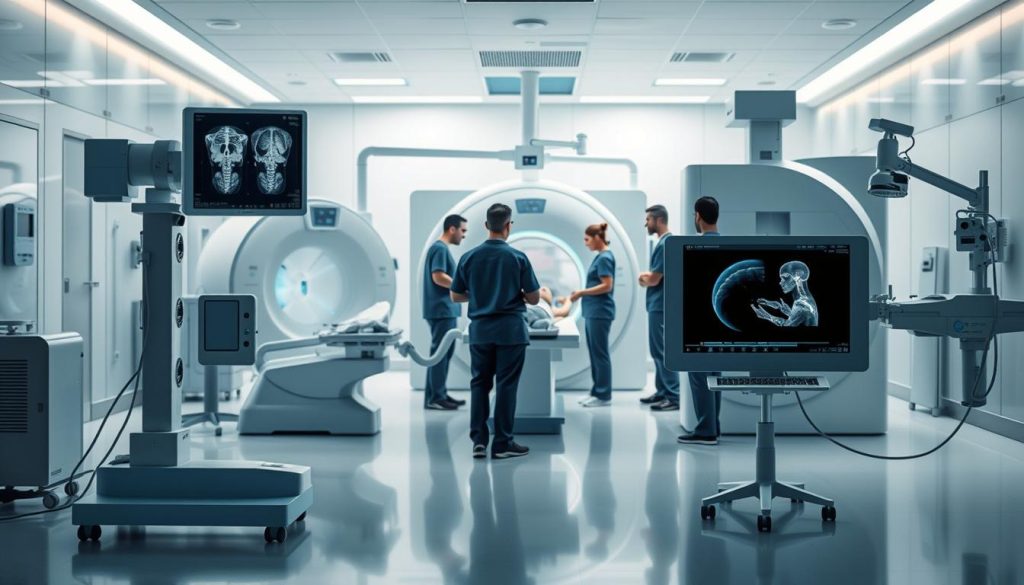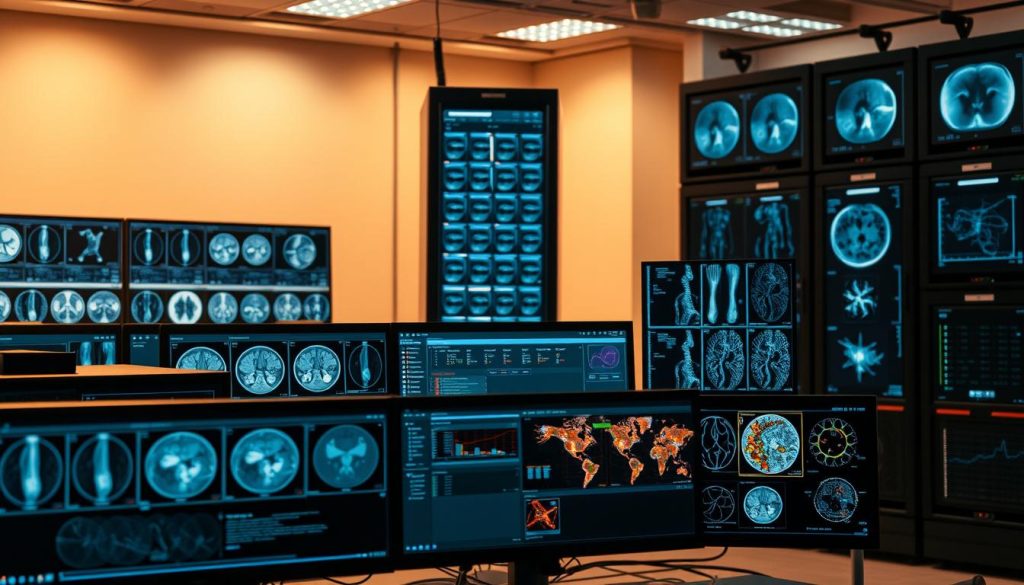High-resolution medical images are reshaping modern healthcare. These detailed visuals provide clearer insights into patient conditions, enabling precise diagnoses and personalized treatments. For healthcare professionals, access to superior imaging resources means better care and faster decision-making.
Key Takeaways
- High-resolution medical images improve diagnostic accuracy and treatment plans.
- Clearer visuals reduce errors and enhance patient safety.
- Modern imaging tools support collaboration among medical teams.
- Advanced imaging drives breakthroughs in medical research and education.
- Learn how to integrate these resources ethically and effectively into your practice.
Explore how high-resolution medical images can elevate your practice. For more information, contact Mr. Abdul Alim at +8801711994334.
What Are High-Resolution Medical Images?
High-resolution medical images are advanced scans used in healthcare to capture detailed views of the body. These images play a critical role in modern medical imaging services, enabling precise diagnoses and treatment plans. Their clarity helps doctors spot conditions early and reduce errors.
Definition and Importance
Technical terms like pixel density and resolution parameters matter here. A high-resolution image has more pixels per inch, creating sharper details. For example, a 3 Tesla MRI scan offers clearer tissue contrast than older models. This level of detail directly impacts how well healthcare providers detect tumors, fractures, or vascular issues.
Key Features of High-Resolution Images
- Contrast ratios: Better differentiation between healthy and abnormal tissues.
- Spatial resolution: Pinpoint small structures like blood vessels or nerve pathways.
- Detail preservation: Maintains image quality even when zoomed in, aiding specialists in complex cases.
Reliable medical imaging services ensure these features are consistently met. For technical support or service inquiries, contact Proprietor Mr. Abdul Alim at +8801711994334.
Benefits of Using High-Resolution Medical Images
High-resolution medical images transform healthcare by offering clarity that saves lives. These diagnostic imaging solutions provide details that standard scans might miss, creating value across every stage of patient care.
Enhanced Diagnostic Accuracy
Clinicians spot tiny abnormalities with ease. For instance, diagnostic imaging solutions reveal early-stage tumors or subtle brain lesions that could be overlooked. This clarity reduces misdiagnosis risks, especially in conditions like lung cancer or vascular disorders.
- Identifies microcalcifications in mammograms
- Pinpoints subtle fractures in bone scans
- Shows tissue changes in inflammatory diseases
Improved Patient Outcomes
Clearer images mean faster, targeted treatments. Patients avoid invasive procedures when scans confirm non-serious issues. One study showed 30% fewer repeat scans when high-resolution tools were used, cutting costs and anxiety.
Effective Communication Among Teams
Specialists collaborate better when images speak for themselves. Radiologists and surgeons can review sharp visuals together, reducing interpretation errors. A recent hospital report noted 40% fewer consult disagreements after adopting advanced imaging systems.
“Better images create a common language for care teams,” said Dr. Elena Martinez, radiology lead at Mayo Clinic. “This cuts delays and ensures everyone works from the same picture.”
These benefits add up to shorter recovery times, fewer follow-up visits, and stronger patient-doctor trust. Every detail matters in diagnosis—and high-resolution imaging makes those details visible.
Types of High-Resolution Medical Images
Modern radiology services offer a range of imaging modalities, each tailored to specific diagnostic goals. Understanding these options helps healthcare providers choose the best tool for their patients’ needs.
MRI and CT Scans
MRI scans use magnetic fields to produce detailed images of soft tissues, such as the brain or muscles. High-resolution MRI systems enhance clarity for conditions like tumors or spinal injuries. CT scans combine X-rays and computers to create cross-sectional views of bones and organs. Advanced CT machines now deliver sharper images, aiding in detecting small fractures or early-stage cancers.
- MRI: Ideal for neurological and musculoskeletal exams
- CT: Preferred for trauma evaluations and lung screenings

X-rays and Ultrasounds
X-rays remain a staple for bone fracture detection, while high-resolution versions reduce radiation exposure without sacrificing detail. Ultrasounds use sound waves to visualize organs in real time—think fetal development or gallbladder scans. Newer systems now offer higher pixel density, improving visibility of small abnormalities.
PET Scans and Other Modalities
PET scans track metabolic activity to identify cancer or heart issues, with high-resolution variants pinpointing tumors earlier. Other modalities like SPECT or angiography also benefit from enhanced resolution, aiding in blood flow analysis or vascular diagnostics. Radiology services increasingly integrate these tools to meet diverse clinical demands.
Selecting the right imaging type depends on the body part, suspected condition, and required detail. High-resolution versions of these technologies are revolutionizing how radiology services support accurate, timely care.
How High-Resolution Images Enhance Research
High-resolution medical imaging isn’t just for diagnosing patients—it’s a cornerstone of groundbreaking research. By capturing detailed anatomical and physiological data, these images fuel discoveries that shape tomorrow’s healthcare. Here’s how they transform scientific inquiry.
Contributions to Medical Research
Medical image analysis drives innovation in labs and universities worldwide. Researchers use these images to:
- Identify subtle disease patterns invisible to older technologies
- Track how treatments alter cellular structures over time
- Develop predictive models for conditions like heart disease
Case Studies and Examples
Recent breakthroughs highlight real-world impact:
In neurology, studies analyzing high-resolution brain scans revealed early Alzheimer’s biomarkers. Cancer researchers used 3D tumor imaging to test targeted therapies, speeding up clinical trials. Even in orthopedics, detailed bone scans improved implant design based on patient-specific data.
“These images are the microscope of the 21st century,” said Dr. Elena Torres, a Stanford radiologist. “They let us see what the human eye alone cannot.”
From drug development to surgical planning, medical image analysis turns raw data into actionable insights. As technology evolves, so does its potential to solve medicine’s toughest challenges.
Technologies Behind High-Resolution Medical Imaging
Modern medical imaging relies on innovations that push the boundaries of what’s possible. From sharper scans to faster results, advanced imaging technology now enables doctors to see details once invisible. This section explores how these tools work and why they matter for patient care.
Advancements in imaging technology are driven by hardware and software breakthroughs. Sensors now capture data at finer resolutions, while algorithms reduce blur and noise. Companies like Siemens Healthineers and Philips use these tools to create systems that generate clearer images in less time. Modern MRI machines, for example, use ultra-cooled magnets to boost detail without increasing scan durations.
Advancements in Imaging Technology
- Sensor arrays with 10x higher pixel density
- Artificial intelligence-enhanced reconstruction software
- Lightweight detectors for portable imaging devices
The Role of AI and Machine Learning
AI transforms raw data into actionable insights. Algorithms analyze patterns too subtle for human eyes, such as early-stage lung nodules in CT scans. Tools like NVIDIA Clara and Google Health’s DeepMind apply machine learning to prioritize urgent cases.
“AI doesn’t replace radiologists—it empowers them to focus on critical decisions,” says Dr. Rajiv Dhir, director at Mayo Clinic Imaging.
These systems flag abnormalities, measure tumor growth, and even predict treatment responses. Hospitals using AI tools report up to 40% faster diagnosis times. As advanced imaging technology evolves, it’s reshaping how healthcare providers tackle complex cases, ensuring no detail goes unnoticed.
Finding Reliable Sources for High-Resolution Medical Images
Healthcare professionals rely on accurate medical images to support diagnoses and treatments. Choosing trusted digital imaging services ensures access to high-quality resources. Below are top options for sourcing reliable imagery:

Trusted Medical Libraries and Databases
Start with curated platforms like:
- PubMed Central’s image archives
- Radiopedia’s peer-reviewed case studies
- National Library of Medicine’s public domain collections
Professional Organizations and Resources
Join groups like the Radiological Society of North America (RSNA) or the American College of Radiology for member-exclusive image libraries. For personalized assistance, contact Mister Abdul Alim at +8801711994334. His expertise connects users to niche imaging solutions, such as rare disease scans or surgical visualization tools.
“Quality imaging starts with verified sources. Partnering with experts ensures your practice uses accurate, up-to-date materials.”
Always verify licenses and permissions when downloading images for clinical use. Prioritizing reputable platforms protects both patient care and legal compliance.
Ensuring Compliant Use of Medical Images
Protecting patient privacy is a cornerstone of healthcare. Radiology imaging solutions must align with legal standards like HIPAA to ensure ethical and safe practices. This section provides actionable steps for healthcare teams to balance innovation with compliance.
Understanding HIPAA Regulations
HIPAA requires strict safeguards for patient data. Key steps include:
- Encrypting digital files during storage and transmission
- Limiting access to authorized personnel only
- Documenting all image transfers in audit-ready logs
Permissions and Ethical Considerations
Before sharing images for research or education:
“Always obtain written consent for non-clinical use,” advises the American College of Radiology. “Even anonymized data requires proper authorization.”
Use institutional review boards (IRBs) to review research proposals. For publications, blur patient identifiers and secure written releases. Radiology imaging solutions providers often offer compliance checklists to simplify these processes.
Maintaining ethical standards builds trust. Simple measures like dual-factor authentication and regular staff training ensure ongoing compliance without stifling collaboration. Trusted platforms automate many safeguards, making best practices accessible to all teams.
Future Trends in Medical Imaging
The future of medical imaging is full of exciting possibilities. High-quality medical scans are set to transform how diseases are detected and treated, with innovations pushing the boundaries of what’s possible.
Innovations on the Horizon
Emerging technologies are redefining diagnostic capabilities. Photon-counting CT scanners, for example, could soon offer sharper images with lower radiation exposure. Quantum imaging and molecular imaging techniques promise to reveal cellular-level details, aiding early cancer detection and personalized treatment plans.
- Photon-counting CT: Better tissue differentiation
- Quantum imaging: Ultra-precise radiation tracking
- Molecular imaging: Targeted drug development insights
The Impact of Telemedicine
Telemedicine is reshaping how high-quality medical scans are shared. Secure platforms now allow specialists to review scans instantly, even in remote areas. Advanced compression algorithms preserve image clarity while reducing file sizes, making remote consultations faster and more efficient.
“Remote scan analysis has cut diagnosis times by up to 40% in pilot programs,” says a 2023 study on telehealth advancements.
These tools enable seamless collaboration between hospitals, ensuring patients access expert opinions without geographic barriers.
While these advancements are promising, challenges like data security and standardization remain. Still, the potential to save lives through better imaging and connectivity makes the future of healthcare brighter than ever.
Conclusion: The Future of Healthcare with High-Resolution Images
High-resolution medical images are transforming how healthcare is delivered today and shaping tomorrow’s advancements. Their role in precise diagnostics, treatment planning, and collaborative care ensures they remain a cornerstone of modern medicine.
Summary of Key Takeaways
High-resolution medical images improve diagnostic clarity, enabling doctors to spot conditions early. Technologies like MRI, CT, and PET scans provide detailed visuals that support better patient outcomes. These images also streamline communication between teams and fuel breakthroughs in medical research. Ensuring compliance with regulations like HIPAA while adopting these tools is crucial for ethical and effective use.
Next Steps for Your Practice
Explore how high-resolution medical images can elevate your healthcare services. Upgrading imaging systems helps deliver accurate diagnoses and fostils patient trust. For tailored guidance on implementing these solutions, contact imaging expert Mr. Abdul Alim directly at +8801711994334. Discuss how advanced imaging technology can align with your practice’s goals. Every step toward better imaging brings you closer to providing top-tier care for patients.
